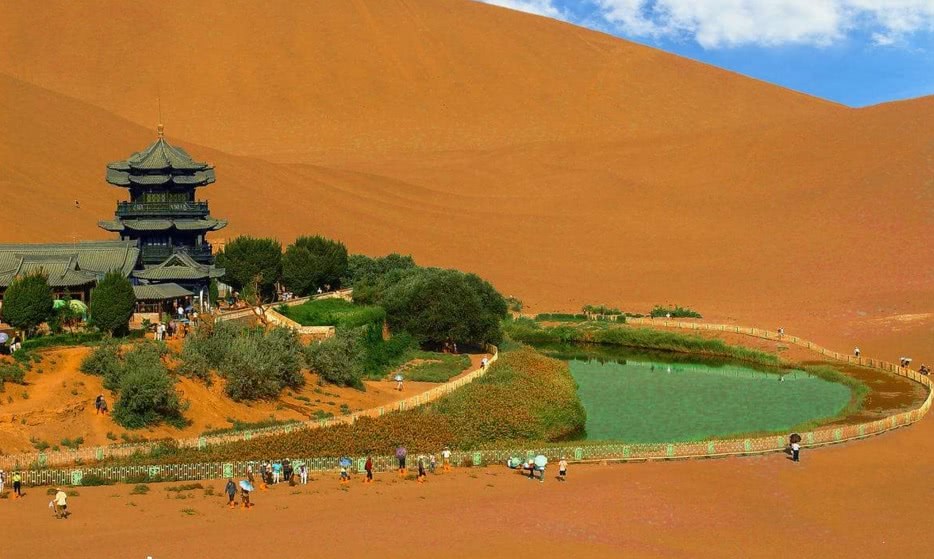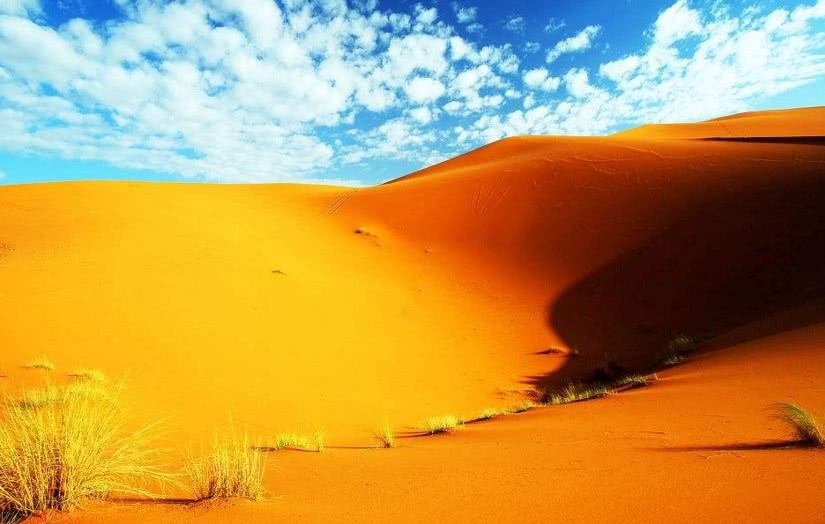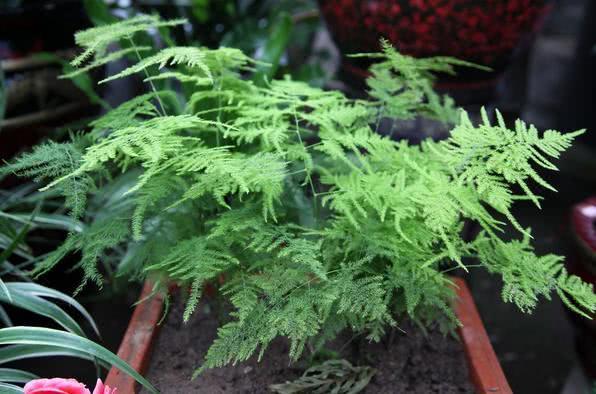Why doesn't the crescent spring dry up in the desert? Where does the water come from? So here's the answer.

When I think of the desert, I feel very thirsty. It can bring disaster, that is, sandstorms. Centuries later, sandstorms have hit many villages. Some of the more severe sandstorms have lifted the roofs of houses and blew yellow sand all over the sky. Bring disasters to people's production and life, but some people yearn for the desert, which is a paradise for explorers. Let's talk about it today. The Crescent Spring, located in the Mingsha Mountain Desert in Dunhuang, has not been covered by wind and sand after each sandstorm.
The Mingsha Mountain Crescent Spring Scenic spot is located 5 kilometers south of Dunhuang City, with a planned area of 212.86 square kilometers, a scenic area of 76.82 square kilometers and a core area of 12.79 square kilometers.
Mingsha Mountain and Crescent Spring are twin sisters in the Gobi Desert. "the mountain sings with spirit, and water benefits with God." There is indeed a sense of "Mingsha Mountain is pleasant, and the crescent moon spring washes the heart".
The Crescent Spring has created a world miracle that has not dried up for hundreds of years, which has attracted many Chinese and foreign tourists to visit. What on earth is the reason why the Crescent Spring will not dry up? Today, let's talk about the crescent spring, which was called a manhole in ancient times. The crescent spring is nearly 100 meters long from north to south and 25 meters wide from east to west. The spring is deep in the east and shallow in the west, and the deepest point is about 5 meters. The crescent spring is shaped like a new moon. It is called the crescent spring locally because of this spectacle, and it is also known as the first spring in the desert. Crescent Spring is covered with yellow sand in all directions, often hit by sandstorms, but Crescent Spring has never been submerged by sandstorms. From the Han Dynasty to modern times, Crescent Spring has been famous as the first spring in the desert and China.
What is the reason why the crescent spring won't dry up?
First: there are eye grass and charophytes growing in the crescent spring, and there are dense reeds on the south bank, surrounded by quicksand, although the spring is not covered by sand in case of strong wind. At the same time, the crescent spring also relies on the continuous replenishment of the underground water system to maintain the continuous upwelling of the spring to form a water cycle.
Second, due to the movement of sand dunes and changes in waterways, they become separate bodies of water. Because of the low terrain, the water that seeps underground is constantly replenished to the spring, making it trickle down and the drought does not dry up.
The northeast is the air intake when the wind blows with the yellow sand, the wind will blow all the yellow sand to the other side, and the crescent spring is not easy to be submerged.
In the mid-1970s, with the local land reclamation and pumping irrigation and the destruction of surrounding vegetation and soil erosion, the water level of Guoya Spring declined rapidly. Nowadays, there are many ways to replenish water artificially in order to maintain the current. Due to the continuous decline of water, "will the crescent spring disappear in the future" has become our concern.
- Prev

China's desert turns into an oasis to create a world miracle the United States is shocked: bluntly unbelievable
Entering the 21st century, with the rapid development of China's economy, I think everyone can feel it. The improvement of our living materials, the progress of science and technology, the development of high-tech industries, and even rank first in the world in many aspects.
- Next

The dirty and smelly black thing is the savior of asparagus. Add some to it and do not fertilize for a year.
In modern daily life, everyone will raise some flowers and green plants at home. These flowers and green plants can decorate the balcony and make the home look more alive. More importantly, it can purify the indoor air. In his spare time,
Related
- Wuhan Hospital Iron Tree Blooming Result Was Instantly Frightened by the Gardener Master
- Which variety of camellia is the most fragrant and best? Which one do you like best?
- What is the small blue coat, the breeding methods and matters needing attention of the succulent plant
- Dormancy time and maintenance management of succulent plants during dormancy
- Minas succulent how to raise, Minas succulent plant pictures
- What are the varieties of winter succulent plants
- How to raise succulent plants in twelve rolls? let's take a look at some experience of breeding twelve rolls.
- Attention should be paid to water control for succulent plants during dormant period (winter and summer)
- Watering experience of twelve rolls of succulent plants
- Techniques for fertilizing succulent plants. An article will let you know how to fertilize succulent plants.

